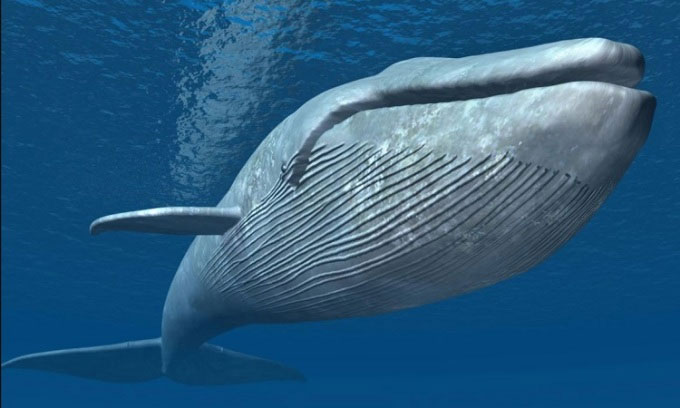Researchers have discovered a “plug” in the throats of certain whale species that helps seal off the airway or esophagus when needed, preventing them from drowning.

The plug in the mouth helps species like the blue whale avoid drowning from swallowing large amounts of water. (Photo: mic1805/Depositphotos).
Whales often feed by swallowing massive amounts of water to catch small mollusks. This lunge-feeding strategy is employed by some baleen whale species, such as humpback whales and blue whales. They typically swim at high speeds into large schools of fish, filling their mouths to the brim. Naturally, this feeding method results in a vast amount of water rushing into their mouths. Whales expel the water by filtering it through their baleen plates, retaining only the food, which consists of mollusks. How do they manage to do this without letting water flood into their lungs or intestines?
In a study published on January 20 in the journal Current Biology, scientists discovered a mass of tissue that acts as a plug at the back of the mouth of the fin whale. When the animal breathes, the plug located at the end of the tongue allows air to flow from the nasal cavity into the lower respiratory tract while simultaneously blocking anything in the mouth from spilling over.
When the whale wants to swallow food, this plug moves up and down, sealing off the nasal cavity and opening the passage from the mouth to the esophagus. At the same time, a cartilaginous structure blocks the entrance to the larynx and lower respiratory tract, preventing food or water from coming into contact with the lungs.
“We have not seen this protective mechanism in any other animals,” said Dr. Kelsey Gil, the lead researcher. “Most of our understanding of whales and dolphins comes from toothed whales with completely separate respiratory systems, so we have defaulted to thinking of baleen whales as lunge-feeding in the same way.”
The research team stated that this unique anatomical feature is key to whales being the largest animals to ever live on Earth. Filtering water to hunt for schools of mollusks is the only way to provide the enormous energy needed to support such large body sizes. Researchers plan to continue studying the anatomical features of whales to gain a better understanding of them and the impact of human activities on their feeding habits.


















































